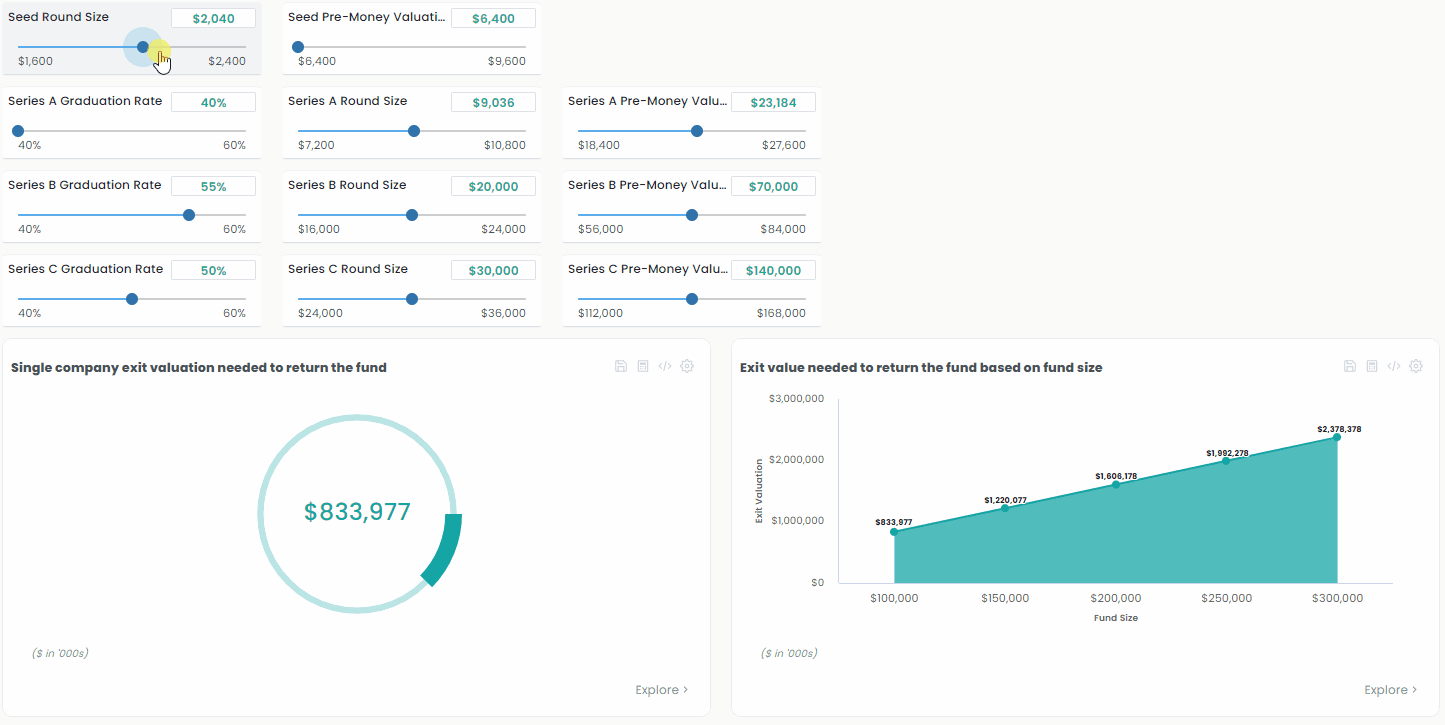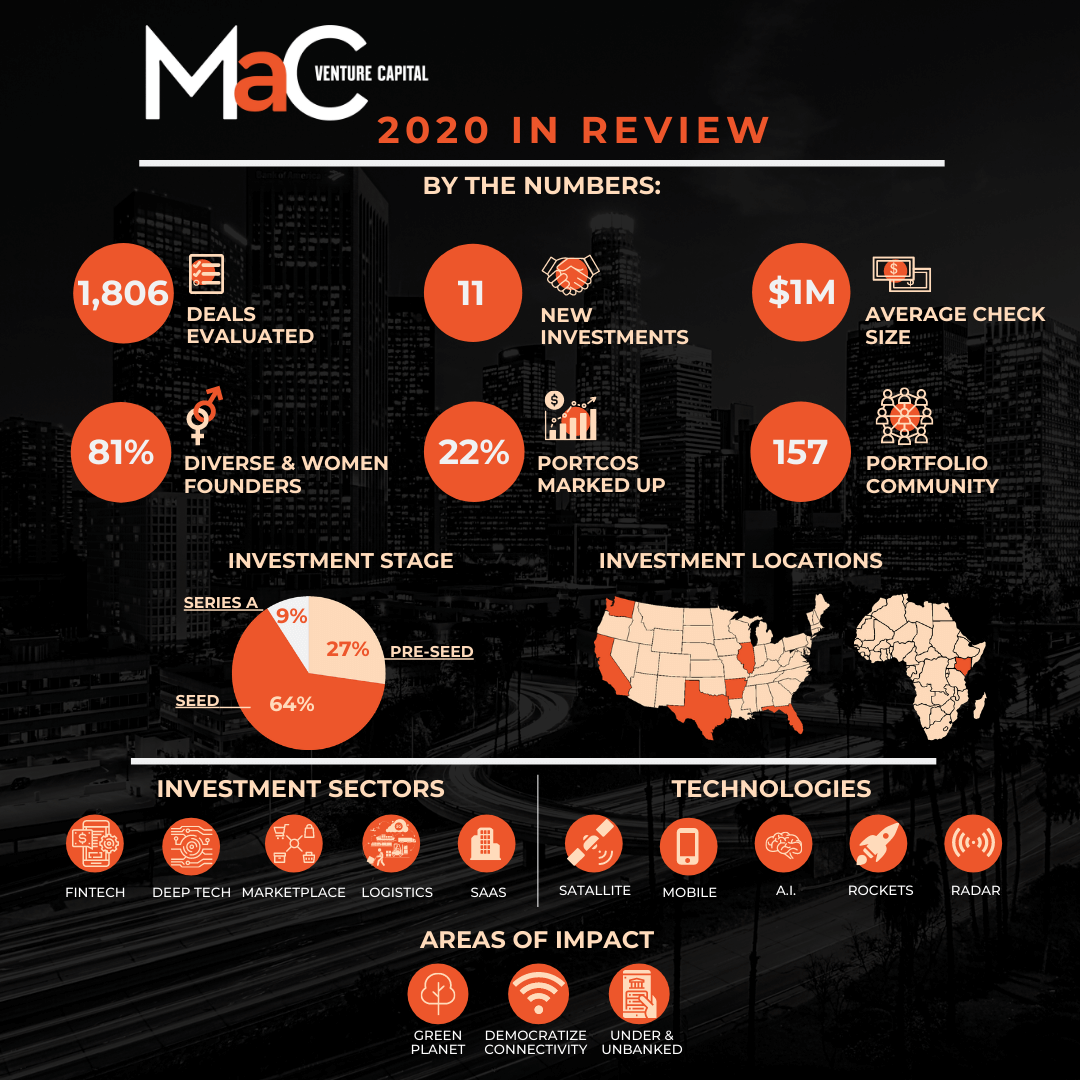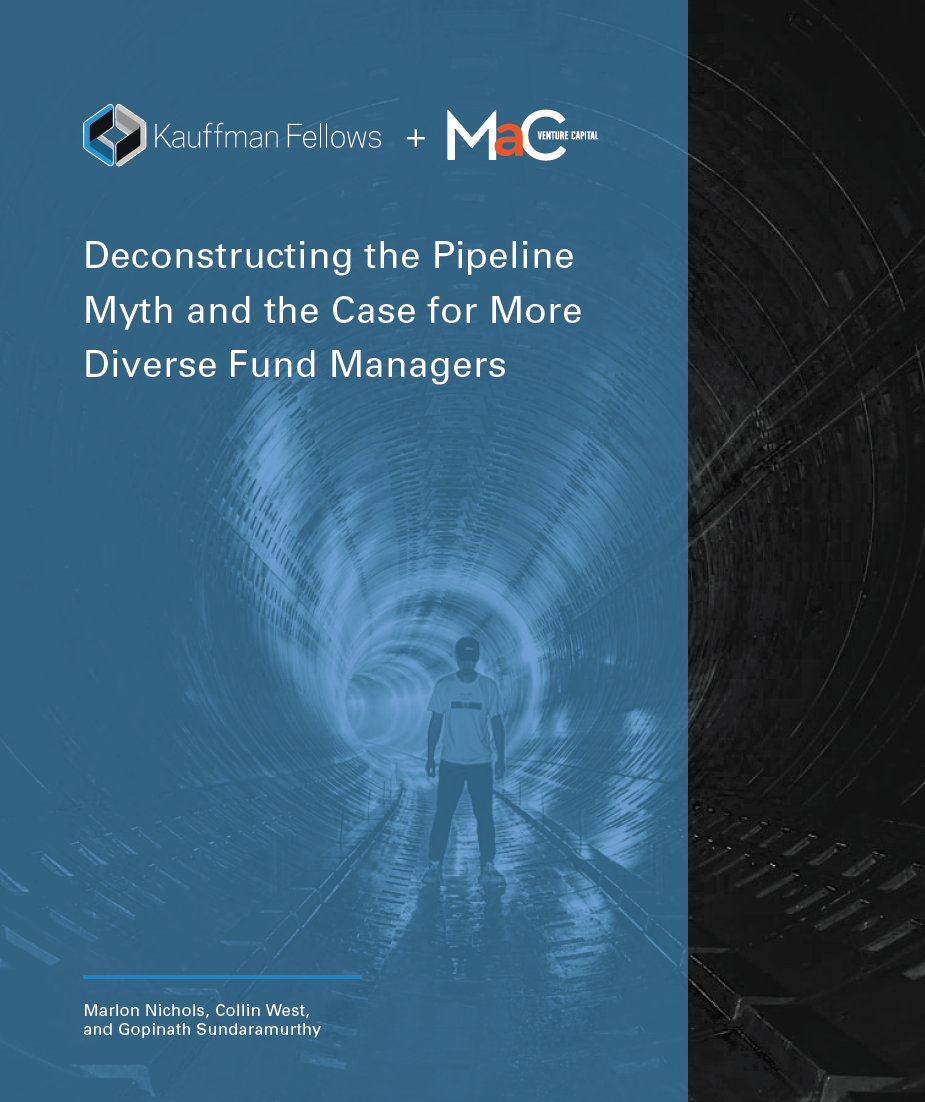Constructing a Venture Fund Portfolio Model

One of the most important things a General Partner (GP) needs to consider early on when starting a venture fund is their portfolio construction strategy. Nearly every potential institutional Limited Partner (LP) will ask a GP about this strategy. Portfolio construction will impact nearly every aspect of running a fund, including return performance. This Tactyc explores venture portfolio construction and the various trade off implications a GP must consider and enables you to construct your own portfolio to understand how various assumptions impact returns to LPs and GPs.
In this blog post, we use Tactyc to explore venture portfolio construction and the various trade off implications a GP must consider and enables you to construct your own portfolio to understand how various assumptions impact returns to LPs and GPs. Tactyc is a MaC Venture Capital portfolio company and is a no-code platform to build interactive web apps (such as this one) from spreadsheets – making scenario analysis easy and intuitive for anyone.
Getting the Puzzle Pieces Right
Portfolio construction is the careful calculus of a number of different decisions related to how a fund is run and the impact that each of those inputs have on each other. The major contributing factors to portfolio construction are below.
- Fund Size: Simply, the amount of capital committed to fund.
- Management Fee and Carry Percentages: Typically funds have a 2% yearly management fee over the 10-year life of the fund (for a total of 20% of fund size) to cover all overhead expenses and a 20% carry (% of profits the GP receives after investors are paid back in full).
- Fund Level Expenses: In addition to the management fees that are paid to the management company for running the fund, there are other expenses that are deducted directly from the fund assets. These fees include legal set-up costs, fundraising expenses and other administrative, legal and infrastructure costs. These costs can range from $250K on the low end into the millions on the high end.
- Number of Total Company Investments: Some funds run a concentrated strategy and aim to invest in a total of 12-15 companies over the life of the fund, others take a more diversified approach and aim to invest in 30-40 companies, and others aim to invest in 50 or more companies.
- Average Initial Check Size: The average amount that will be invested in the first round of fundraising (assuming that more will be invested in the top-performing companies if there is allocation to follow-on investments).
- Target Ownership From Initial Investment: The percentage of the company the firm will look to get with their average initial check size.
- Follow-On Reserves: The percentage of the fund that will be reserved to make follow-on investments into the fund’s best-performing companies. Some funds have a two-for-one follow on ratio meaning that for every dollar they first invest into a company, two more dollars are reserved for follow-on, while other funds aim to take a larger ownership percentage up front and reserve between 20% and 40% for follow-on.
- Fee and Expense Recycling: Fee recycling is reinvesting the fund expenses and management fees (usually as follow-on investments) as distributions occur. For a $100M fund with a 2% yearly management fee, there will be $20M in total management fees taken over the life of the fund. Many funds look to reinvest the full fund into companies and will invest up to the $20M as companies exit and money is returned to the fund.
- Targeted Net Return: The targeted amount of capital the fund looks to return to its LPs. For a $100M fund, a 3x net return means that the fund targets to return to its investors a total of $300M.
- Required Return Fund Capital to Targeted Net Return: Going off the example above, if a fund is targeting a 3x net return, meaning they wish to pay to their investors $3 for every $1 invested, the required fund return to hit 3x is actually higher than $300M given fees and carry. It is important to understand the total required return needed to hit the targeted net return.
- Graduation Rate Assumptions: Individual company dilution needs to be factored into fund performance. One way to do this is to make some assumptions around the percentage of total companies raising subsequent financing rounds, as well as assumptions on the size and pre-money valuations of those rounds. Some funds may assume that of all the seed investments they make, 50% will successfully raise series A rounds, and of those, 50% will go on to raise series B rounds, and 50% of those C rounds and so on.
Construct your own portfolio
See the interactive model here that enables you to setup your own fund scenario by flexing the following levers to see impact on capital allocation and implied number of investments
Portfolio Construction Trade-offs
As you can see, if the portfolio construction is not modeled out properly a fund manager can potentially underestimate the impact of changing various input assumptions. A simple but common mistake is around fund size, total targeted companies and average check size. If the targeted fund size is $100M and the managers are targeting 20 companies for the fund they may think the average investment in each company would be $5M. But this is way off. First, the fund will likely take management fees, and if they are taking a 2% yearly management fee, $20M would need to be deducted from the $100M (assuming no fee recycling). But even a $4M average check size would be incorrect if reserves for follow-on are being made. If the fund is reserving 50% for follow-on investments, the remaining net amount for initial investments is $100M less $20M in fees less $50M in follow-on reserve, or $30M, meaning the average initial investment would be $1.5M. And if the GPs wanted to invest $2 in follow-on for every $1 of initial investment, the average initial investment would have to be even smaller at $1.3M.
The average size of initial investment will also have an impact on the average initial ownership percentage. If the average seed round is done at a $10M post-money, a $1.5M investment would yield an average ownership stake of 15%. But if 15% is the fund’s target for average initial ownership, employing a two-for-one follow-on strategy would make that target impossible with the given assumptions. And if the number targeted companies in the portfolio were to go to 40 from 30, the average initial check size and initial ownership would go down even further. Tactyc Note: Flex the Initial Check Size and Follow-on Reserve to see the impact on investment amount and average ownerships with and without follow-on
Fund Return Economics
Some funds perform “return the fund” analysis before making an individual investment. This analysis essentially looks to understand what value a given company would have to exit at to both return the fund as well as hit the targeted net return given assumed dilution over time. A fund may assume that their initial ownership in a company will be 10% and that through follow-on they will hold on to that ownership stake through the series B round. They then assume the company goes on to raise another two rounds before exiting where 25% of the company is sold each round. This would mean that the fund’s ownership would fall to 7.5% after the series C and to 6% after the series D for a total of 40% dilution. If the fund owned 6% of the company at exit, to return $100M, the company would have to exit at $1.78B and to return 3x net, the company would have to exit at $6.58B.
Of course most funds hope that not all but one company they invest in has an exit, so the GPs must then make some assumptions around the percentage of companies that go to zero, return 1x capital, return a modest 3x capital, return a healthy 25x capital and return more than 100x capital. Making assumptions around graduation rates can help GPs better understand the exit outcome assumptions implied in their construction model. Tactyc Note: Flex the graduation rates, round size and pre-money valuations at each round to see the impact on Return the fund
Net LP Return Multiple
Finally, another common approach is to back into the required fund value to guarantee a Net LP return multiple (i.e. net of fees and carry). For e.g. for a $100M fund to return 3x net to its LPs given the standard 2 and 20 model and $850K in total fund expenses, the total net return for the fund would have to be $370M after taking into account the implied fees and carry to GP’s. Tactyc Note: Flex the Required LP Return Multiple to see the impact on Required Fund Return and Implied Return Multiples (TVPI and MoIC)
Final Thoughts
Funds taking a more concentrated approach and investing in fewer companies most likely are assuming that one of their investments has an extremely large outcome while the rest either go to zero or whose exits are much more modest. This is called the power law dynamic and historically, this can be seen happening often in venture capital. Funds taking a more distributed approach may still hope to have a very large, multi-billion dollar exit for one of their companies, but with more “swings of the bat” they may also assume that more of their companies exit at 3x and 25x to achieve their desired net return performance.
By Mike Palank (MaC Venture Capital) and Anubhav Srivastava (Tactyc)
—
We hope you enjoyed this quick primer. This interactive analysis was built on Tactyc, a no-code platform to transform spreadsheet models into interactive web apps in seconds and a valuable tool in effective portfolio construction and analysis. If you’d like to see the underlying spreadsheet or want to use Tactyc for your own portfolio construction, please reach out at anubhav@tactyc.io or mike@macventurecapital.com.
About MaC Venture Capital
MaC Venture Capital is a seed-stage venture capital firm that invests in technology startups leveraging shifts in cultural trends and behaviors. Our diverse backgrounds in technology, business, government, entertainment, and finance allow us to accelerate entrepreneurs on the verge of their breakthrough moment. We provide hands-on support crucial for building and scaling category-leading companies, including operations strategy, brand building, recruiting, and mission-critical introductions.
About Tactyc
Tactyc is a no-code platform that transforms spreadsheet models into interactive web apps that enable smarter scenario analysis. Powered by the Tactyc Spreadsheet Engine that translates spreadsheet logic automatically into code, Tactyc enables users to create interactive presentations, extract model insights and build embeddable calculators in seconds. Tactyc was founded in 2020 by Anubhav Srivastava and is based in Los Angeles, CA.












